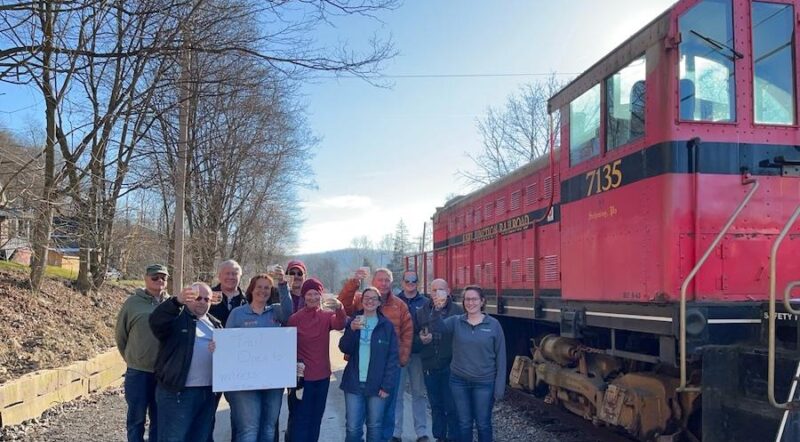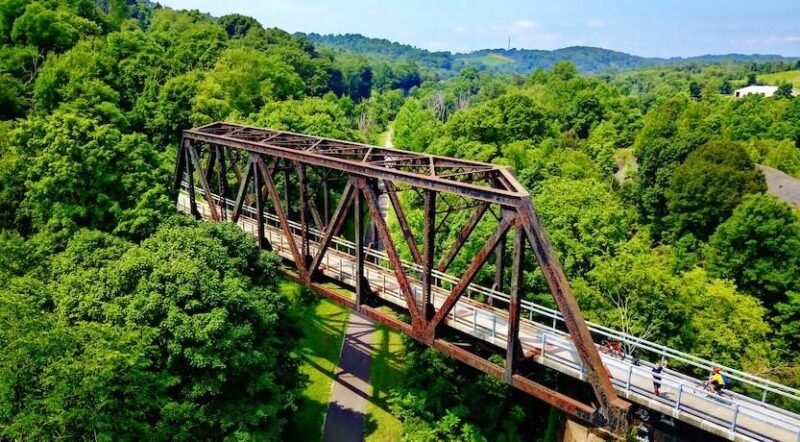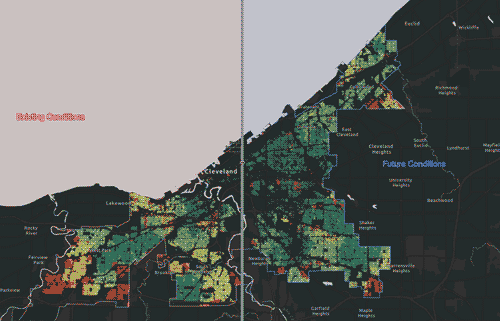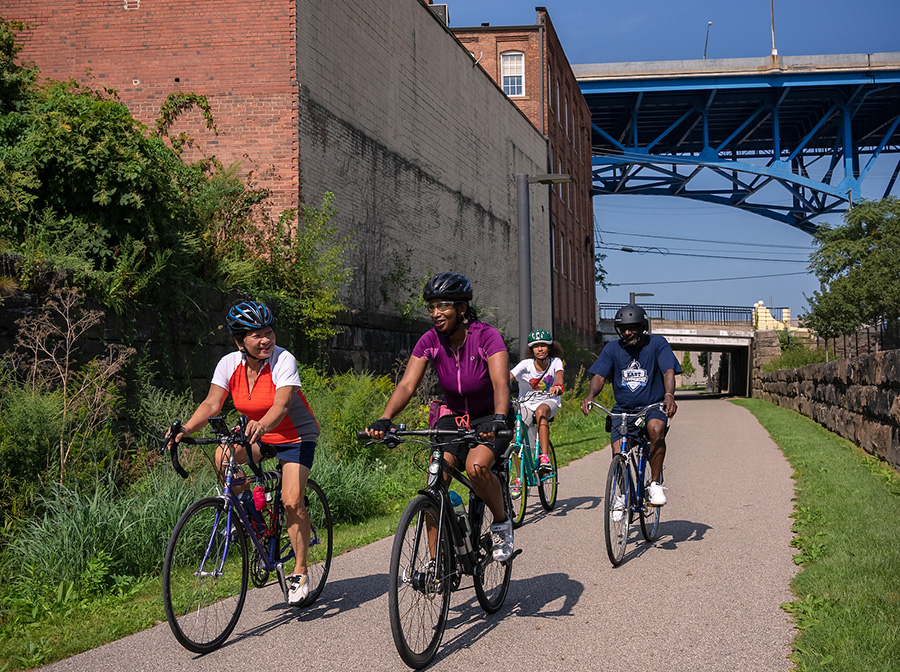Industrial Heartland Trails Coalition (IHTC)
Ohio’s Cleveland Foundation Centennial Lake Link Trail | Photo by Jason Cohn
Vision
Working Together to Connect the Region’s Shared-Use Trails
The vision of the Industrial Heartland Trails Coalition (IHTC) is to establish the Industrial Heartland as a premier destination offering a 1,500-miles-plus multiuse trail network experience.
The IHTC network will stretch across 51 counties in four states—Pennsylvania, West Virginia, Ohio and New York—from the shores of Lake Erie to the confluence of the Three Rivers in Pittsburgh and on to the Ohio River and Appalachian foothills.
Stories from the IHTC
View More Blogs
Pennsylvania’s Armstrong Trails

A Cultural Shift as America’s Trail Networks Take Hold

Pennsylvania and West Virginia’s Panhandle Trail
Advancing Cleveland’s Active Transportation Agenda

RTC partnered with the City of Cleveland , other public agencies and local bike advocates to conduct a BikeAble study with the intention of better understanding the potential impact of each potential project. This study, Advancing Cleveland’s Active Transportation Agenda, reveals how strategic, prioritized investments in trails and biking infrastructure could improve connectivity for residents citywide and examines how these investments bring value to neighborhoods experiencing inequality.
What This Means for the Industrial Heartland
The IHTC builds upon past efforts to organize the trails community, leverage the cultural heritage of the region into a premier trail destination, and harness and amplify the benefits of the region’s trails systems. This includes stimulating the regional economy through outdoor tourism and small business investment, and creating social equity and new health connections for underserved communities across the project footprint.

Creating a New Regional Identity
The IHTC will spur a new wave of regional tourism, encouraging exploration of the small towns, major cities, historical sites, rivers and mountains that characterize America’s first frontier and heartbeat of the industrial revolution. The project is establishing a new collective identity for the communities along the route whose shared past and present—of innovation, steel, agriculture, manufacturing, boom, bust, reinvention and renewal—becomes their shared future.
Creating Smart Transportation Options
Approximately 3.5 million people living in 1.5 million households are located within 3 miles of a destination corridor. Of those people, 85 percent are older than 16 (employment age). Of those living within 1 mile of a destination corridor, 89.1 percent who are employed commute by car—and only 4.7 percent currently walk or bike to their jobs. Filling in the trail network’s 700 miles of gaps will provide hundreds of thousands of people new, safe off-road access to areas of commerce and places of employment in major cities and small communities across the route.

Promoting Social Equity and Health
Completing the gaps in the trail network will provide increased access to safe active transportation routes and opportunities for physical activity to underserved populations throughout the project footprint. For example, in Pennsylvania, African Americans have extremely high rates of obesity and chronic disease due to issues such as poverty, less access to grocery stores and less access to parks and green space. Changes to the built environment will reduce these barriers to access while creating new connections to jobs and shopping centers and supporting healthier lifestyles.
Fueling Strong Economies in the Industrial Heartland
Creating new regional economic opportunity is central to the vision of the Industrial Heartland Trails Coalition (IHTC). The trails alone offer serenity, scenery, historical sites, industrial relics, public art, trailside eateries and more. Beyond the trail, visitors can cycle, drive or be transported to a wide variety of attractions.
A recent study of the potential for the trail project to generate tourism labeled the “I Heart Trails” as a destination—one that has lure—a “wow” factor that leaves lasting impressions.
It’s evident that trails increasingly demonstrate their significance in community transformation through economic activity by trail users, including visitors and locals.
The study found that the IHTC is uniquely positioned to bring value to the region by influencing trail development and quality, trail-to-town connections and tourism promotion. These findings are bolstered by the fact that the economic impact of trails within the project footprint has already been demonstrated:

- Visitors to the rural Ghost Town Trail have a positive annual impact of $1.7 million.
- People who frequent the Three Rivers Heritage Trail in Pittsburgh generate $7 million annually for the local economy.
- The latest study along the 150-mile Great Allegheny Passage demonstrates an annual $50 million direct economic impact to communities along the trail.
- A 2013 study on 66 miles of the proposed Erie to Pittsburgh trail corridor showed an annual impact of $7 million.
Achieving the IHTC Vision

Achievements
Since 2013, the Industrial Heartland Trails Coalition (IHTC) has worked to make the 1,500-miles-plus vision a reality.
Past achievements include:
- Defining the 1,500-miles-plus network, with a focus on corridors that will touch the most citizens across the Industrial Heartland and provide the most beneficial connections for communities
- Launching the GoTo Trails website to support region-wide planning efforts—and ensure synergetic collaboration between partners
- Completing a naming and branding process for the coalition that captures and creates a unified identity for the region
- Establishing corridor working groups to engage local stakeholders and ensure important local buy-in and support for the project
- Conducting an extensive research project to create a cutting-edge trail traffic count model for the project footprint
- Creating dynamic communications materials to support local members in their promotion of the overall vision
- Conducting a “business impact” study in collaboration with West Virginia University in Morgantown, West Virginia, to further capture and communicate the economic benefits of the project for local communities
- Completing a feasibility study of the 150-miles-plus West Virginia section of the P2P corridor, providing a section-by-section blueprint to complete the trail.
Continuing Efforts
The coalition is made up of more than 100 organizations who have participated in IHTC meetings. A Coordinating Committee meets quarterly to collaborate and advance the vision.
IHTC members are working to build new trails, fill in gaps in the network vision and maintain the trails already on the ground. Current efforts include:
- Engaging in an economic impact study of trails in Morgantown, West Virginia, as well as on the Ohio & Erie Canal Towpath Trail in Northeast Ohio, to analyze the current and potential impact of the project on communities along the project route
- Establishing a process for corridor analyses and feasibility studies along parts of the route—to help support local communities in making the case for connecting their trails and communicating the local benefits of the completed trail network
- Creating compelling programming locally that helps tell the story of the local trails and the larger IHTC story to trail users
- Working with local elected officials, business owners and public agencies to continue to build support for all levels of trail building efforts across the project footprint
- Presenting the IHTC vision at local, regional and national conferences to spread the word about the coalition’s work—and how it’s moving the dial regionally and nationally with regard to outdoor tourism, economic development, active transportation, social equity and health
Project Leads



The Pennsylvania Environmental Council (PEC), the National Park Service Rivers, Trails and Conservation Assistance program Ohio field office and RTC are collaborating to lead the regional trail effort.